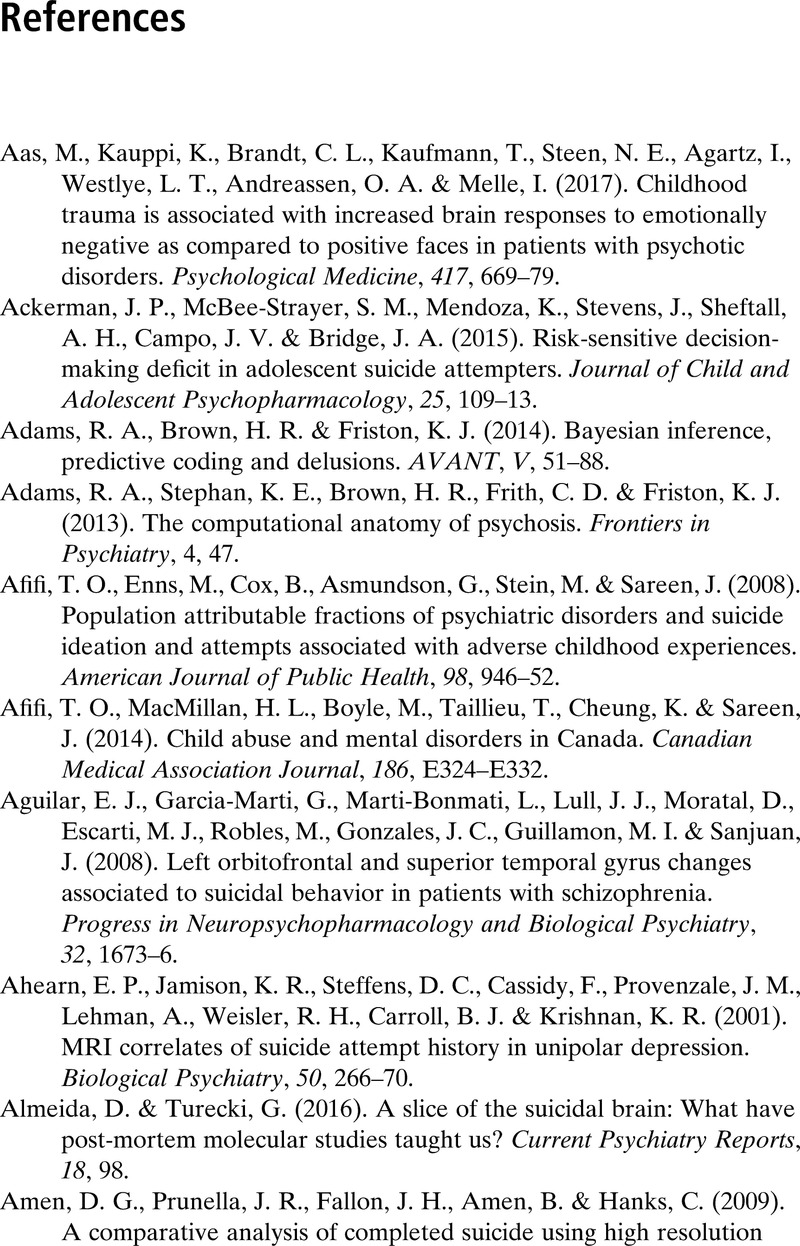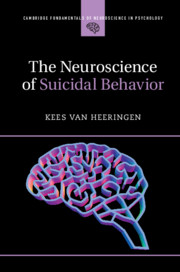Book contents
- Frontmatter
- Dedication
- Contents
- Figures
- Tables
- Preface
- Chapter One What Is Suicidal Behavior, and Can It Be Prevented?
- Chapter Two Stress, Vulnerability, and Suicide
- Chapter Three The Dark Side of the Brain
- Chapter Four Lethal Signals
- Chapter Five I Think, Therefore I Do Not Want to Be
- Chapter Six Images of the Suicidal Brain
- Chapter Seven “In my end is my beginning”
- Chapter Eight I Predict, Therefore I Cannot Be
- Chapter Nine Predicting the Unpredictable
- Chapter Ten The Treatment of Suicide Risk
- Glossary
- References
- Index
- Colour Plates
- References
References
Published online by Cambridge University Press: 22 May 2019
- Frontmatter
- Dedication
- Contents
- Figures
- Tables
- Preface
- Chapter One What Is Suicidal Behavior, and Can It Be Prevented?
- Chapter Two Stress, Vulnerability, and Suicide
- Chapter Three The Dark Side of the Brain
- Chapter Four Lethal Signals
- Chapter Five I Think, Therefore I Do Not Want to Be
- Chapter Six Images of the Suicidal Brain
- Chapter Seven “In my end is my beginning”
- Chapter Eight I Predict, Therefore I Cannot Be
- Chapter Nine Predicting the Unpredictable
- Chapter Ten The Treatment of Suicide Risk
- Glossary
- References
- Index
- Colour Plates
- References
Summary

- Type
- Chapter
- Information
- The Neuroscience of Suicidal Behavior , pp. 211 - 268Publisher: Cambridge University PressPrint publication year: 2018



